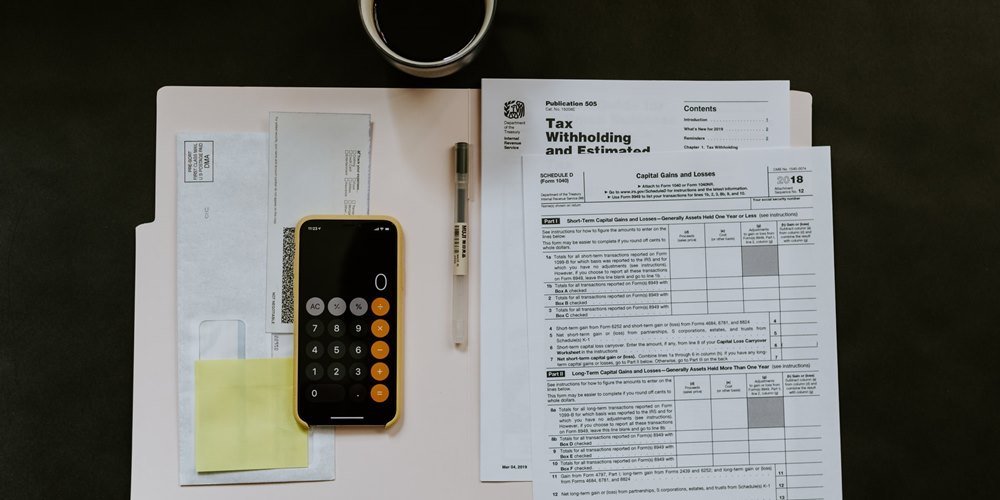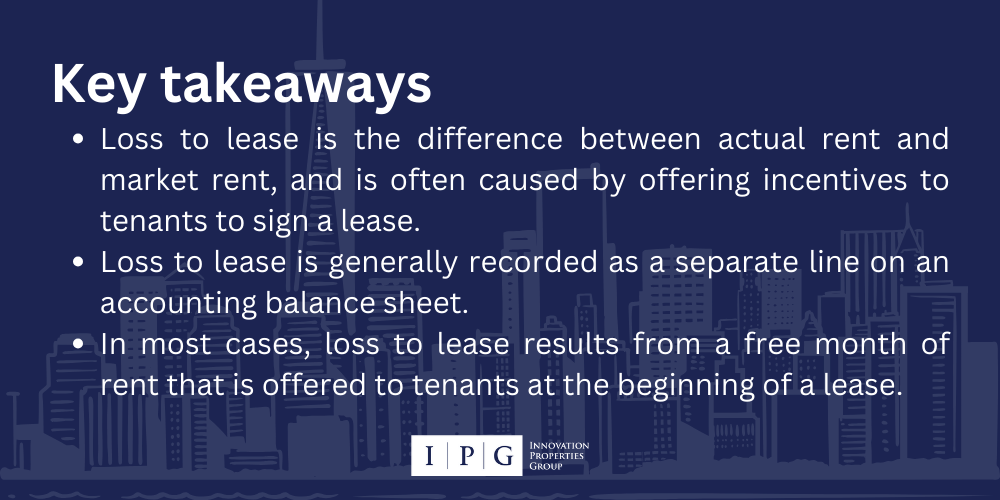Loss to Lease Definition and Calculator

Is loss to lease percentage an exact calculation or is it an assumption/input? In a scenario where we are performing apartment renovation or acquisition, does the loss to lease calculate the difference between pro-forma and actual rent, or the division of these rent rates.
Actually, it can be either. I typically calculate loss to lease based on the difference between proforma market rent and the actual one.
The topic for today is the all-mysterious concept of Loss to Lease and the definitions that sometimes are misinterpreted when it comes to the calculation of its rents.
What Is Loss to Lease?
First of all, the term lease to loss doesn’t get tossed around quite often because it is kind of clear what it means, but sometimes people interpret it very uni-dimensionally, lacking in-depth perspective.
Thus, let’s define loss to lease term, and examine some of the perspectives in numbers. Typically there are 4 types of rental numbers that we look for as part of the leasing process:
- Stated Market Rent – or, what the current landlord thinks the rent should be.
- Most Recent Actual Rent – the rents that the landlord is able to obtain within the trailing of 2 or 3 months.
- Seasoned Actual Rent – the rents that tenants have been paying over the course of 1 to 2 years (T12 – T24).
- After-Repair Market Rent – the rents a tenant thinks he can achieve after changing some units.
Loss to Lease is the difference between the Most Recent Actual Rent and the After-repaired Market Rent, presented as a percentage. Essentially, the market prices the units as they are, and Loss to Lease is the difference between that and what we think the units are worth after being upgraded (repaired or renovated).
Loss to lease definition explains the difference between rent price on the market and in-place gross rent stated before vacancies, concessions, etc. In a market language, rental growth is almost always a loss to lease experience where you can’t capture 100% of growth, meaning that if you sign your lease today, you won’t be able to renew rents at market rate prices for the next 12 months.

Perspective on Value Add
Although LTL (Loss to lease) can seem like just “raising rent”, things are not that simple. Raising rents can lead to vacancies as tenants move out and sometimes landlords can end up paying higher turnover costs that usually include:
- Cleaning, repairing, and redecorating one, several, or all the units
- Marketing the unit and bringing in new leads
- Time wasted on searching for new tenants
- Signing a new tenant
The value you add can help you achieve above-market rents, cutting your loss to lease, but unfortunately, sometimes the upgrades you make might not work if your property is in a neighborhood that undergoes urban blight.
What Is Gain to Lease?
On the other hand, the gain to lease is rental income above market rates. When you have a gain-to-lease case, you earn more than the unit’s GPR.
It’s redundant to say that a “gain to lease” is a very desirable situation but you should check if your estimate of market rents is accurate.
Loss to Lease Calculation – How to Calculate Loss to Lease
The goal of the loss to lease calculation is to quantify the difference between pure business (market) rents and the actual price of the leased space or the unit you own. It might be helpful to get familiar with the following terms in order to begin the loss to lease calculation:
- Market Rent: The business price of a given neighborhood, and type of property, hinged on supply and demand. Typically, the market rent is determined by averaging the rents of comparable properties.
- Gross Potential Rent (GPR): The amount of rental income expected out of 100% of rented units for the entire year.
- Rent Concessions: An offer that provides extra value to a tenant who agrees to renew a lease.
- Net Effective Rent (NER): The rental income received after accounting for rent concessions and/or cash allowances.
Loss to lease formula
There are several ways to obtain the Loss To Lease formula, but the simplest is the formula of downtime. The resulting dollar value is deducted from the GPR.
Loss to Lease = Gross Potential Rent – Net Effective Rent
This equation recognizes the fact that it’s very unusual to collect GPR for a whole year., and the most common reasons include:
- An imperfect tenant retention rate or lease renewal rate
- Rent concessions
- Delinquencies
- Vacant units

Loss To Lease in Multifamily
Loss to Lease in multifamily properties refers to a situation where the current rents are lower than what could be earned at prevailing market rates. This concept, known as ‘loss to lease multifamily,’ isn’t about actual financial losses, but rather the missed opportunity to earn higher income.
Although rent is being collected, if it’s set below the market rate, the property experiences a ‘loss to lease multifamily.’ This means the property isn’t generating as much income as it potentially could, representing missed chances to maximize revenue in multifamily real estate. For instance, if other similar properties in the area charge more rent, your property is effectively ‘losing’ that extra income.
Loss to Lease Examples
There are several types of rent concessions you can make and be sure that all of them will lead to a loss to lease case. For simplicity purposes, let’s assume your potential gross rent has no rent growth attached to it, and you are leasing a 10 unit building, where every unit has its “market rent” of $1, but with “actual rent” of $0.50.
At Acquisition, your potential Gross Rent is around $10 ($1/unit). The actual rent will be $5 (10 units @ $0.50/unit), and ultimately your loss to lease is $5 (PGR-Actual).
In the first year, the potential gross rent is $10, with actual rent of $6. Loss to Lease:+ will be $4.
Second-year rent:
Potential Gross Rent: $10
Actual Rent: $7
Loss to Lease: $3
What happened from Acq to YR1 to YR2? Well, we turned 2 units in YR1 to “market” rent of $1, giving us $6 of actual rent.
(2 units of $1)+(8 units of $0.50)=$6
Our Gross Potential Rent if all the units were to be turned into “market price” is $10. This gives the $10-$6=$4 Loss to Lease. The same thing happened from YR1 to YR2; we converted another 2 units to “market”.
Your loss to lease formula is simply a subtraction of your Gross Potential Rent (price at “market”) and the Actual Rent (what you are currently receiving).
You can predict your future cash flow based on how many units you plan on bringing to the “market” price per year, coupled with how much your rents will grow (your rental growth factor). Keep in mind that the “actual rent” you can be using is “gross” and prior to any vacancy loss, bad debt, etc.
Hopefully, you understand what loss to lease means, and you can begin narrowing the loss by taking concrete steps. We have offered several ways in this article, along with ways to quantify your inherent losses.
The goal is to rent out all of the units at market rent or above that price, while avoiding vacancies. If you would like to discuss financing the purchase, construction or renovation of multifamily units, call us.
IPG is a high-end, commercial finance and brokerage firm specializing in large CRE transactions, with high net-worth individuals.




